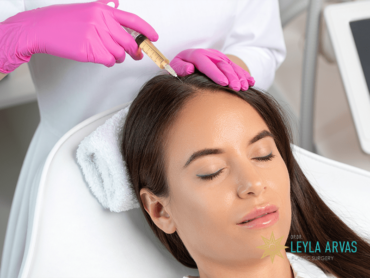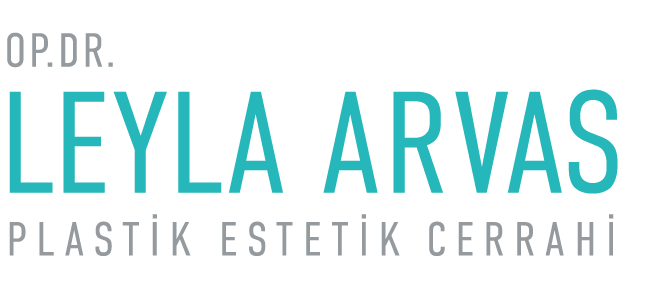
PRP treatment is one of the procedures that initiates the healing process in the body, aiming to stimulate self-repair and address cosmetic and health concerns by triggering the renewal process in the treated area. This article provides detailed explanations about PRP, including what it is, how it is done, and its benefits.
What is PRP?
PRP treatment is a procedure that utilizes platelets, which play a crucial role in the body, to initiate the healing process and promote rapid regeneration of damaged areas. During the PRP (platelet-rich plasma) procedure, platelet-rich plasmas are separated through specialized methods and then injected back into the area of the body that requires treatment. This initiates the healing and rejuvenation process in that specific area.
How is PRP Treatment Performed?
A small amount of the patient’s blood is taken from their arm and undergoes a centrifugation process to obtain platelet-rich plasma (PRP). The PRP, obtained within approximately 15 minutes, is then injected back into the targeted area of the patient’s body using micro-needles. The platelets reach the area in need of repair through the bloodstream and promptly initiate the regeneration process. The quality and effectiveness of the plasma used in the PRP procedure are enhanced by the patient’s adherence to a healthy diet in the days leading up to the treatment. The duration of the PRP procedure varies depending on the size and needs of the treatment area but typically takes about an hour to complete.
Why is PRP Treatment Important?
The significance of PRP treatment stems from the regenerative and reparative effects of the platelets used during the procedure. Factors such as genetics, structure, stress, poor nutrition, aging, alcohol, and smoking can lead to a decline in collagen production and cell renewal in the body, resulting in cosmetic and health issues. PRP treatment aims to facilitate the regeneration of damaged tissues in such cases. After undergoing PRP treatment, patients often experience reduced health problems, strengthened and thickened hair, and a brighter and more vibrant complexion, ranging from alleviating hair loss and reducing the appearance of wrinkles to repairing tendon tears and improving skin texture.
What Precautions Should Be Taken During PRP Application?
PRP procedures should be performed by experienced doctors in hygienic clinical settings. Conducting the procedure without ensuring these conditions can pose various risks, ranging from infection to long-term health issues. Careful consideration should be given to the selection of individuals who will perform the PRP procedure. The PRP kit used during the procedure should be of high quality and opened specifically for each patient. The use of a high-quality PRP kit, appropriate kit usage for accurate PRP application, and adherence to hygiene conditions are crucial for achieving satisfactory and safe results.
What are the Advantages of PRP Application?
Since the platelet-rich plasma used during the PRP procedure is derived from the patient’s own blood, it does not cause any allergic reactions in the body. Compared to surgical procedures, PRP application offers several advantages. It does not require lengthy dressing changes or recovery periods like surgical procedures and is more affordable. For example, if the extent of tendon discomfort does not necessitate surgical intervention, individuals can find relief through PRP treatment. Rather than relying on painkillers and dealing with their side effects, individuals with chronic pain can activate the body’s natural regeneration and repair mechanisms through PRP treatment, resulting in pain relief. When performed by experts in the field, PRP treatment does not carry any serious side effects or risks. It is normal to experience mild redness, bruising, and swelling that will subside within approximately one week following the procedure.
Who is Not Suitable for PRP Treatment?
Although PRP is a safe and low-risk procedure when performed by qualified individuals in hygienic conditions, it is not recommended for certain groups of people. These include individuals who are pregnant or breastfeeding, those who need to take blood-thinning medication, those with active infections in the application area, cancer patients, and individuals with blood disorders.
What are the Benefits of PRP Treatment?
PRP treatment is applied in various areas with different objectives, including:
- Achieving a youthful appearance in the face, neck, and décolletage areas.
- Improving the appearance of fine lines and wrinkles.
- Increasing collagen and elastin production in the body.
- Reducing the appearance of acne scars and blemishes.
- Promoting skin rejuvenation.
- Slowing down hair loss, revitalizing existing hair, and stimulating new hair growth.
- Attaining a brighter, healthier, and more radiant complexion.
- Treating scar marks.
- Treating tendon and ligament injuries, as well as sports-related injuries, and repairing the damage.
- Reducing pain and increasing joint mobility caused by joint conditions.
- Treating partial muscle tears without the need for surgery and supporting muscle fibers.
- Alleviating pain and reducing degenerative damage caused by rheumatoid arthritis.
How Many Sessions of PRP Treatment Should Be Done?
The number of PRP treatment sessions and the intervals between sessions vary depending on the purpose of the treatment and the area of application, as well as the specific needs of the area. As a general guideline, achieving desired results often involves 3-4 sessions of PRP treatment performed monthly. To maintain the long-term effects of the treatment, additional support sessions determined by the doctor should be scheduled.
Is there a Preparation Phase before PRP Treatment?
Before the PRP treatment, a local anesthetic may be applied to the treatment area, depending on the location and requirements of the area. After a thorough examination by a specialist doctor, the application area is disinfected to eliminate the risk of infection. Subsequently, if necessary, the area is numbed using a local anesthetic cream. After approximately 20-30 minutes of waiting, the application area becomes numb, and the PRP procedure can commence.
Is There an Age Limit for PRP Treatment?
PRP treatment is not only used to achieve a vibrant and youthful appearance but can also be performed as a treatment option for health issues such as tendon damage and sports injuries before they require surgical intervention. Therefore, as long as individuals of almost any age have a general good health condition without conditions that would impede the procedure, such as diabetes, kidney or heart diseases, cancer, or blood disorders, PRP treatment can be applied without any age restrictions.
What is the Cost of PRP Treatment?
PRP treatment is frequently performed by specialized and experienced professionals at Quartz Clinic. It is not legal for approved health centers to mention prices on their news and websites. Furthermore, the cost of PRP treatment varies depending on the area of application, the specific requirements of that area, the experience of the doctor, and the quality of the clinic. Therefore, individuals who wish to rejuvenate their skin and achieve a more vibrant appearance through PRP treatment can contact us at Quartz Clinic by calling +90 212 241 46 24 to schedule an appointment and obtain further information.
